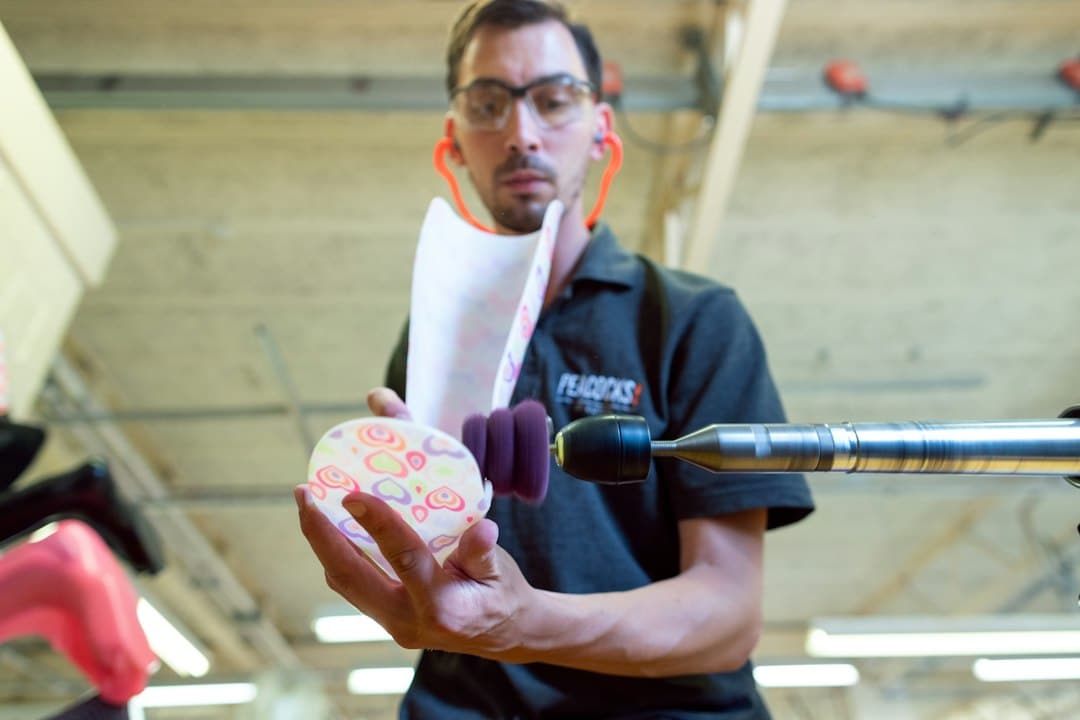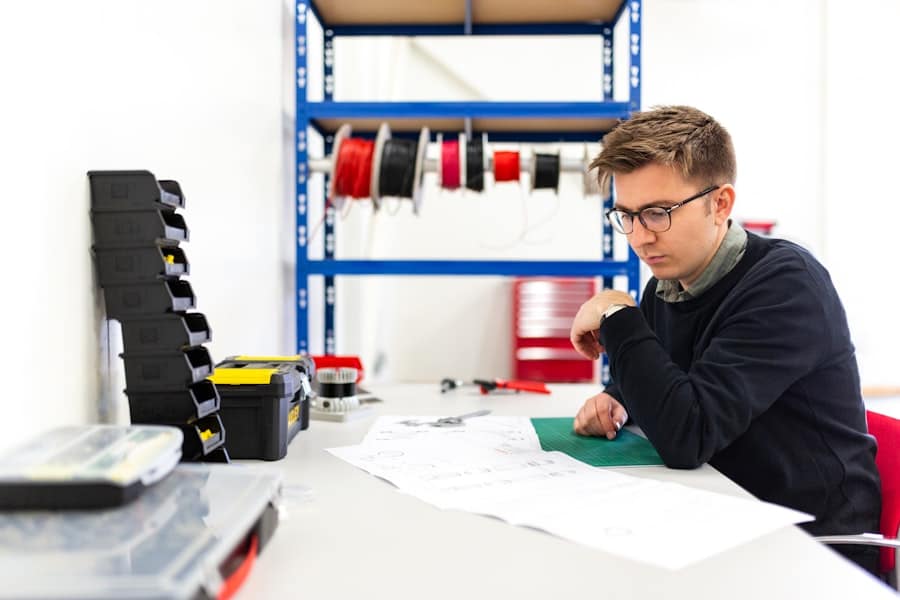
Proper cabinet installation is crucial for both the functionality and aesthetics of your kitchen or bathroom. Cabinets are an essential part of any space, providing storage and organization for your belongings. However, if they are not installed correctly, they can become a source of frustration and even pose safety risks. That's why it's important to hire a professional cabinet installer who has the expertise and experience to ensure a seamless installation.
Hiring a professional cabinet installer offers numerous benefits. Firstly, they have the knowledge and skills to properly measure and install cabinets, ensuring that they fit perfectly in your space. They will also be able to identify any potential issues or challenges that may arise during the installation process and come up with effective solutions. Additionally, professional installers have access to specialized tools and equipment that are necessary for a successful installation. They also have the experience to handle any unforeseen circumstances that may arise during the installation process.
Key Takeaways
- Expert cabinet installation requires a variety of tools for measuring, cutting, clamping, fastening, and finishing.
- Essential tools for cabinet installation include a level, drill, screwdriver, and tape measure.
- Power tools such as a circular saw, jigsaw, and router can make cabinet installation faster and more efficient.
- Hand tools like a hammer, chisel, and hand saw are also necessary for certain tasks during cabinet installation.
- Measuring and marking tools like a combination square and marking gauge are crucial for ensuring accurate cuts and placement of cabinets.
Essential Tools for Cabinet Installation
Installing cabinets requires a variety of tools, both power tools and hand tools, to ensure a smooth and efficient installation process. Having the right tools for the job is essential for achieving professional results.
Power tools are an essential part of cabinet installation. These tools make the job faster and easier, allowing you to complete the installation with precision and accuracy. Some of the power tools needed for cabinet installation include a drill/driver, circular saw, jigsaw, and router. A drill/driver is used for drilling holes and driving screws, while a circular saw is used for cutting large pieces of wood. A jigsaw is useful for making curved cuts or cutting out sink openings, while a router is used for creating decorative edges or making precise cuts.
Power Tools for Cabinet Installation
Using power tools safely and effectively is crucial for a successful cabinet installation. Before using any power tool, it's important to read the manufacturer's instructions and familiarize yourself with the tool's features and functions. Always wear appropriate safety gear, such as safety glasses and ear protection, when operating power tools.
When using a drill/driver, make sure to select the appropriate drill bit for the task at hand. Use a drill bit that matches the size of the screws you are using to ensure a secure and tight fit. When drilling holes, apply steady pressure and avoid forcing the drill. Let the drill do the work and avoid pushing too hard, as this can cause the drill bit to break or damage the material you are drilling into.
When using a circular saw, always use a sharp blade and make sure it is properly aligned with the cutting line. Hold the saw firmly with both hands and guide it along the cutting line in a smooth and controlled motion. Avoid applying excessive pressure or forcing the saw through the material, as this can cause kickback or result in an uneven cut.
Hand Tools for Cabinet Installation
In addition to power tools, hand tools are also essential for cabinet installation. These tools allow for more precise and detailed work, such as measuring, marking, and fine-tuning adjustments.
Some of the hand tools needed for cabinet installation include a tape measure, level, chisel, hammer, and screwdriver. A tape measure is used for taking accurate measurements, while a level ensures that cabinets are installed straight and level. A chisel is useful for making small adjustments or removing excess material, while a hammer is used for driving nails or tapping pieces into place. A screwdriver is necessary for tightening screws and ensuring a secure fit.
When using hand tools, it's important to use them safely and effectively. Always wear appropriate safety gear, such as gloves and eye protection, when using hand tools. Use tools that are in good condition and free from any defects or damage. Follow proper techniques and guidelines when using each tool to avoid accidents or injuries.
Measuring and Marking Tools for Cabinet Installation
Accurate measurements and markings are crucial for a successful cabinet installation. Without precise measurements, cabinets may not fit properly or align correctly, resulting in an uneven and unprofessional installation.
Some of the measuring and marking tools needed for cabinet installation include a tape measure, combination square, and pencil. A tape measure is used to measure the dimensions of the space where the cabinets will be installed. A combination square is useful for marking 90-degree angles and ensuring that cabinets are installed square and level. A pencil is used to mark the measurements and guidelines on the cabinets and walls.
When taking measurements, it's important to be precise and consistent. Measure multiple times to ensure accuracy and double-check your measurements before making any cuts or adjustments. Use a combination square to mark 90-degree angles and ensure that cabinets are installed square and level. Make sure to use a sharp pencil and make clear, visible markings that can be easily followed during the installation process.
Cutting Tools for Cabinet Installation

Cutting tools are essential for cabinet installation, as they allow you to customize cabinets to fit your space and make precise cuts for openings or adjustments.
Some of the cutting tools needed for cabinet installation include a circular saw, jigsaw, and router. A circular saw is used for cutting large pieces of wood, such as cabinet panels or countertops. A jigsaw is useful for making curved cuts or cutting out sink openings. A router is used for creating decorative edges or making precise cuts.
When using cutting tools, it's important to use them safely and effectively. Always wear appropriate safety gear, such as safety glasses and ear protection, when operating cutting tools. Make sure the cutting blades are sharp and properly aligned with the cutting line. Use a steady hand and guide the tool along the cutting line in a smooth and controlled motion. Avoid applying excessive pressure or forcing the tool through the material, as this can cause kickback or result in an uneven cut.
Clamping and Holding Tools for Cabinet Installation
Clamping and holding tools are essential for keeping cabinets in place during installation and ensuring a secure and stable fit.
Some of the clamping and holding tools needed for cabinet installation include bar clamps, pipe clamps, and spring clamps. Bar clamps are used to hold cabinets together or secure them to the wall. Pipe clamps are useful for holding cabinets in place while the adhesive or screws dry. Spring clamps are used to hold small pieces or components in place during assembly.
When using clamping and holding tools, it's important to use them safely and effectively. Make sure the clamps are properly aligned and tightened to provide a secure hold. Avoid over-tightening the clamps, as this can damage the cabinets or cause them to warp. Use clamps that are appropriate for the size and weight of the cabinets you are installing.
Fastening Tools for Cabinet Installation
Fastening tools are essential for securing cabinets in place during installation and ensuring a strong and durable connection.
Some of the fastening tools needed for cabinet installation include a drill/driver, screwdriver, and nail gun. A drill/driver is used for drilling holes and driving screws, while a screwdriver is necessary for tightening screws and ensuring a secure fit. A nail gun is useful for quickly and efficiently attaching cabinets to the wall or other surfaces.
When using fastening tools, it's important to use them safely and effectively. Always wear appropriate safety gear, such as safety glasses and ear protection, when operating fastening tools. Use the appropriate size and type of screws or nails for the task at hand. Apply steady pressure when driving screws or nails to ensure a secure connection. Avoid over-tightening screws or driving nails too deep, as this can damage the cabinets or weaken the connection.
Finishing Tools for Cabinet Installation
Finishing tools are essential for completing the cabinet installation and achieving a professional and polished look.
Some of the finishing tools needed for cabinet installation include a sander, putty knife, and paintbrush. A sander is used to smooth out any rough edges or surfaces before applying paint or finish. A putty knife is useful for filling in any gaps or imperfections with wood filler or putty. A paintbrush is necessary for applying paint or finish to the cabinets.
When using finishing tools, it's important to use them safely and effectively. Always wear appropriate safety gear, such as a dust mask and eye protection, when sanding or applying paint or finish. Use a sander with the appropriate grit sandpaper for the task at hand. Apply even pressure and sand in the direction of the wood grain to avoid scratches or damage. Use a putty knife to apply wood filler or putty in thin layers, and smooth out any excess with the knife. When applying paint or finish, use smooth and even strokes to achieve a consistent and professional look.
Safety Gear for Cabinet Installation
Safety should always be a top priority during cabinet installation. Wearing appropriate safety gear can help protect you from accidents or injuries.
Some of the safety gear needed for cabinet installation includes safety glasses, ear protection, gloves, and a dust mask. Safety glasses protect your eyes from flying debris or particles, while ear protection helps reduce noise levels and prevent hearing damage. Gloves provide protection for your hands and help improve grip when handling tools or materials. A dust mask helps filter out dust and particles that may be released during sanding or cutting.
In conclusion, proper cabinet installation requires a variety of tools and safety gear. Whether you hire a professional or decide to tackle the job yourself, it's important to have the right tools and knowledge to ensure a successful installation. Power tools, hand tools, measuring and marking tools, cutting tools, clamping and holding tools, fastening tools, and finishing tools are all essential for a smooth and efficient installation process. Additionally, wearing appropriate safety gear is crucial for protecting yourself from accidents or injuries. By investing in the right tools and taking the necessary safety precautions, you can achieve a professional and polished cabinet installation.
FAQs
What is the article about?
The article is about the top 10 tools that are essential for expert cabinet installation.
What are some of the tools mentioned in the article?
Some of the tools mentioned in the article include a drill, a level, a measuring tape, a circular saw, a jigsaw, a router, a clamp, a square, a hammer, and a nail gun.
Why are these tools important for cabinet installation?
These tools are important for cabinet installation because they help ensure that the cabinets are installed properly and securely. They also help make the installation process easier and more efficient.
Can these tools be used for other types of woodworking projects?
Yes, many of these tools can be used for other types of woodworking projects, such as building shelves, tables, and other furniture.
Do I need to be an expert to use these tools?
No, you do not need to be an expert to use these tools. However, it is important to have some basic knowledge of woodworking and safety precautions before using them.
Where can I purchase these tools?
These tools can be purchased at hardware stores, home improvement stores, and online retailers.
Are there any safety precautions I should take when using these tools?
Yes, it is important to wear protective gear, such as safety glasses and gloves, when using these tools. It is also important to read the manufacturer's instructions and follow all safety guidelines.

